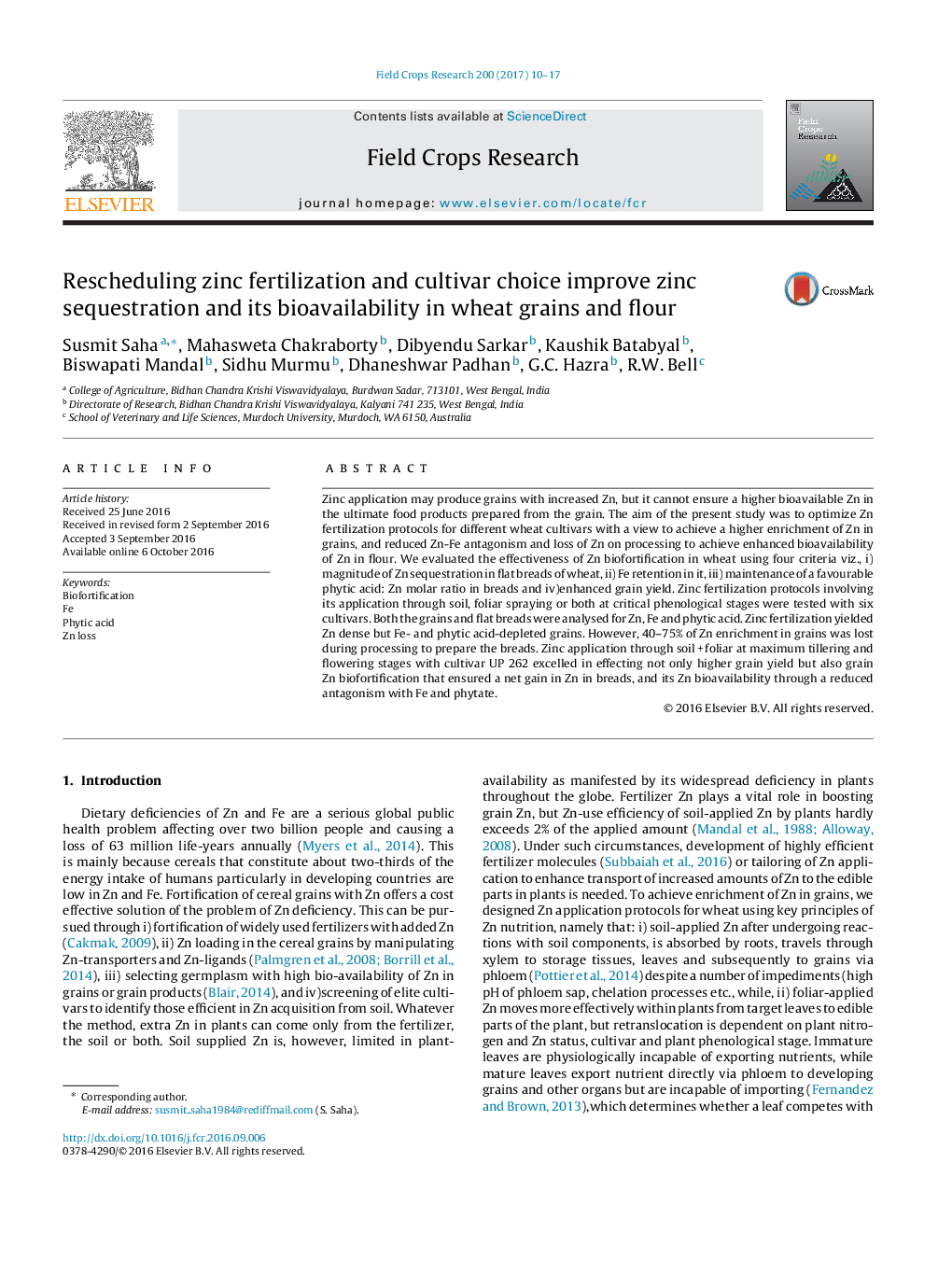| Article ID | Journal | Published Year | Pages | File Type |
|---|---|---|---|---|
| 4509801 | Field Crops Research | 2017 | 8 Pages |
•Phenological stages of plant influence Zn translocation through xylem and phloem.•Soil + 2 foliar applied Zn sequestered maximum Zn in grains and flat breads.•Zinc induced Fe and phytic acid depletions were present in the grains.•Loss of Zn on processing increased with increasing Zn loading in grains.•Efficient cultivars and protocols for Zn application were screened out.
Zinc application may produce grains with increased Zn, but it cannot ensure a higher bioavailable Zn in the ultimate food products prepared from the grain. The aim of the present study was to optimize Zn fertilization protocols for different wheat cultivars with a view to achieve a higher enrichment of Zn in grains, and reduced Zn-Fe antagonism and loss of Zn on processing to achieve enhanced bioavailability of Zn in flour. We evaluated the effectiveness of Zn biofortification in wheat using four criteria viz., i) magnitude of Zn sequestration in flat breads of wheat, ii) Fe retention in it, iii) maintenance of a favourable phytic acid: Zn molar ratio in breads and iv)enhanced grain yield. Zinc fertilization protocols involving its application through soil, foliar spraying or both at critical phenological stages were tested with six cultivars. Both the grains and flat breads were analysed for Zn, Fe and phytic acid. Zinc fertilization yielded Zn dense but Fe- and phytic acid-depleted grains. However, 40–75% of Zn enrichment in grains was lost during processing to prepare the breads. Zinc application through soil + foliar at maximum tillering and flowering stages with cultivar UP 262 excelled in effecting not only higher grain yield but also grain Zn biofortification that ensured a net gain in Zn in breads, and its Zn bioavailability through a reduced antagonism with Fe and phytate.
Graphical abstractFigure optionsDownload full-size imageDownload as PowerPoint slide
